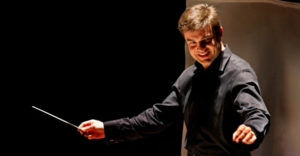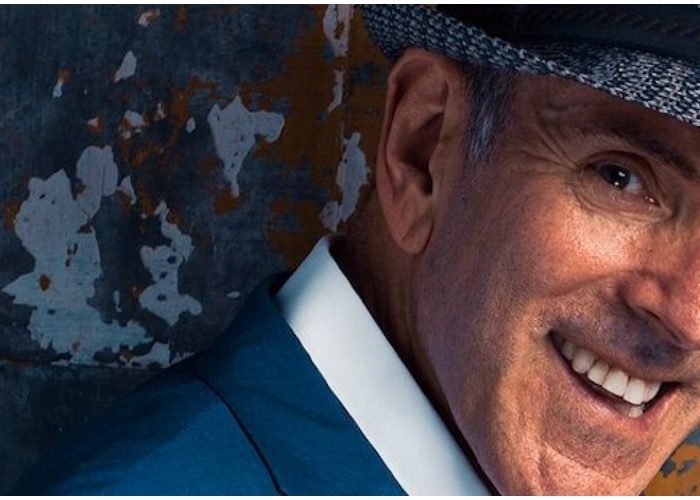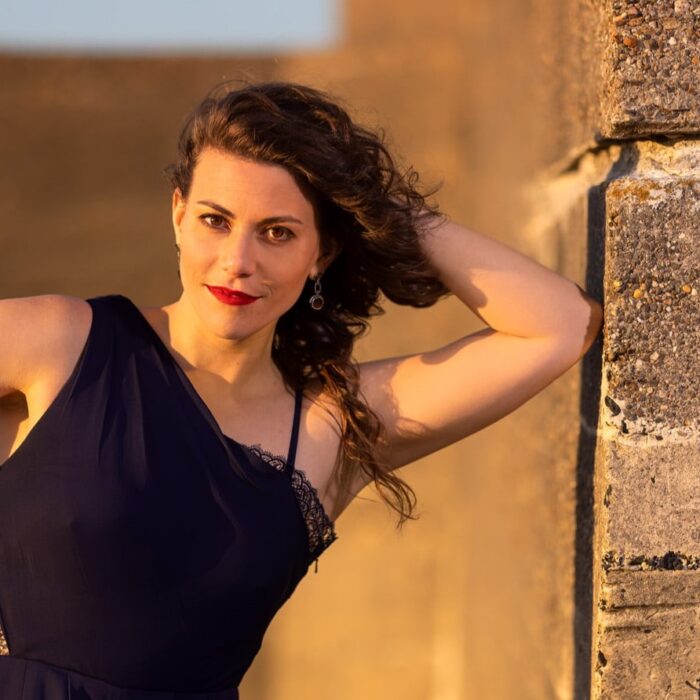
Creating Tradition – ‘The (R)evolution of Steve Jobs’ Conductor Michael Christie on the Responsibilities of Leading World Premieres
By David SalazarWhen “The (R)evolution of Steve Jobs” makes it world premiere on July 22, 2017, at the Santa Fe Opera, there will be two musicians in the pit of varying operatic experience.
On one hand will be composer Mason Bates, known for a wide-range of symphonic works. He will be showcasing his electronic orchestral colors in his very first opera.
On the other will be Michael Christie, a conductor who has no less than five World Premieres under his belt and experience as a conductor from his high school days when he conducted “La Forza del Destino” overture under the guidance of a school teacher. He has also performed and led such organizations as the New York Philharmonic, the Los Angeles Philharmonic, the National Symphony Orchestra, the Rotterdam Philharmonic, the DSO Berlin, the Czech Philharmonic, the Sydney Symphony and the Netherlands Radio Symphony, among many others.
While this will be the first opera that Bates and Christie collaborate on, it won’t be their first experience as a team.
In fact, Christie, while honing his craft as the Music Director of the Phoenix Symphony and Brooklyn Philharmonic, worked with Bates and when they talked about the potential of doing a piece regarding the great Apple creator, Christie was immediately hooked, as he told OperaWire in an interview.
“Mason is a great guy to work with and we’ve been in each other’s orbits for quite some time. So for me, this collaboration has been rewarding,” Christie noted.
Creating Tradition
Taking on a world premiere is no easy feat for any conductor, but with such works as “The Shining,” “Silent Night,” and “The Manchurian Candidate (all by “The (R)evolution of Steve Jobs” scribe Mark Campbell), among others, under his belt, Christie has learned to embrace the great responsibility that comes with this experience.
“For me, the greatest challenge in doing a world premiere is that we are creating tradition,” he stated. “You have to be aware of the decisions that are made along the way and how they will impact others down the road.”
He noted that part of that creation of tradition remains after the initial run of performances. The team will return to the work and talk about what worked and what didn’t. The aim? To make sure that what they leave behind allows the freedom for the next set of interpreters to take and run with.
“There have been a lot of changes for this production. I know what a scribble means in terms of switching around an instrument. But for another conductor, we need it to be clear so they can have the interpretative freedom” he noted.
All about Story
Interpretative freedom is the key word and one that Christie thinks many conductors overlook when doing a world premiere.
“I think a lot of times, people try to be too loyal to what is written on the page. They go into this very narrow reading of what’s on the page and sticking to that,” he explained.” But this doesn’t happen with a traditional opera like ‘Madame Butterfly.’ The world insists that you have an interpretative view. They want to know what your ‘Butterfly’ or ‘Faust’ sounds like. What I’ve taken from the traditional repertory is to question everything on every page. Does the music drive the drama? And if it doesn’t, then what is it that I need to do? And I try to do the same for new works. I try to be interpretative from the start instead of regurgitating what’s on the page.
That interpretative spirit was passed down to Christie from his experiences with Franz Welser-Möst, when he worked under the great maestro as an assistant conductor at the Zürich Opera. Welser-Möst was particularly adamant about the need to emphasize story.
“It’s all about the drama and the story. Everything serves the story. That’s what he would tell me,” Christie noted. “It’s important not to lose sight of the fact that we are interpreters and have to create the drama and not fuss over whether a note is an eighth note or if it is legato or staccato. That’s what gives new pieces heart and emotional depth.”
And speaking of that story and drama, Christie assures people that “The (R)evolution of Steve Jobs will pack quite the dramatic punch.
“This guy, who through all these clean and polished and precise devices, had his desire to make sure that externally and internally they were perfect that you couldn’t get inside and tinker. But internally he struggles,” Christie explained. “He was a tough guy. He was a tough boss. He was a genius that was all over the place. As we go through this experience of the opera, he is a complex figure. I think that one thing we refer to often is that he was a billionaire Buddhist. That’s a contradiction alone that makes for a tricky man. I think the opera is about what’s inside of him and who he let inside and who he pushed away.”
Back to the Pit
But back to that pit for one second where audiences will get the unusual experience of seeing the conductor and composer making music together live. What will make this collaboration unique is precisely how they will work together.
Bates will be set up with his own station from which he will produce synthetic sounds, many of them already pre-recorded. At times he will be working with the acoustic forces of the orchestra while at others they will be apart.
“I really wish people could see in the pit. It is interesting to watch and I think that people will enjoy seeing how we blend the two very different colors together into one.”


